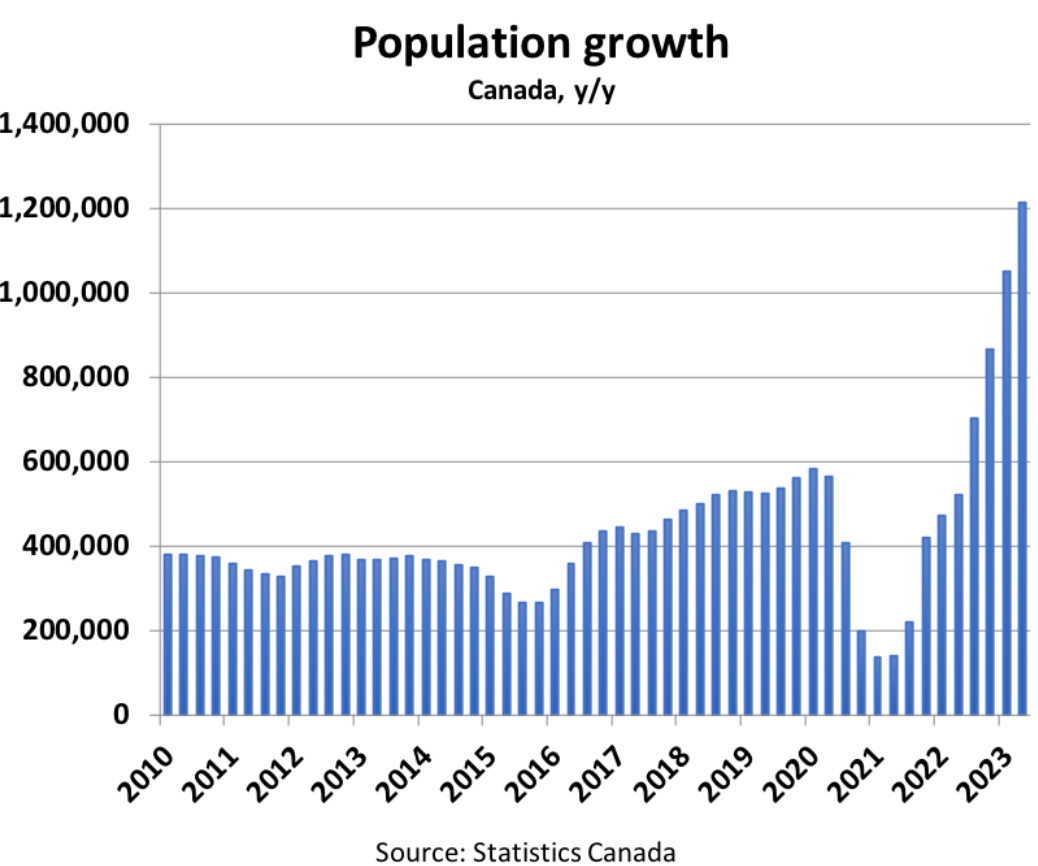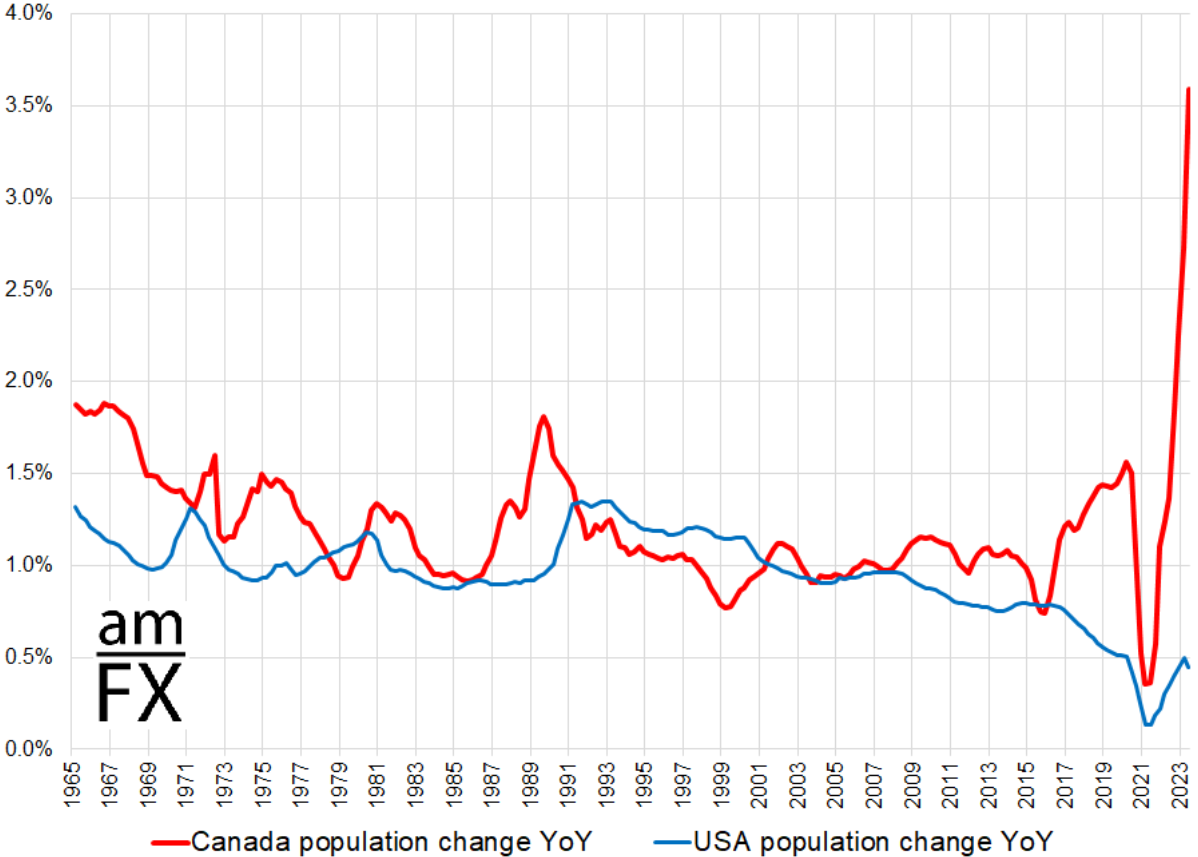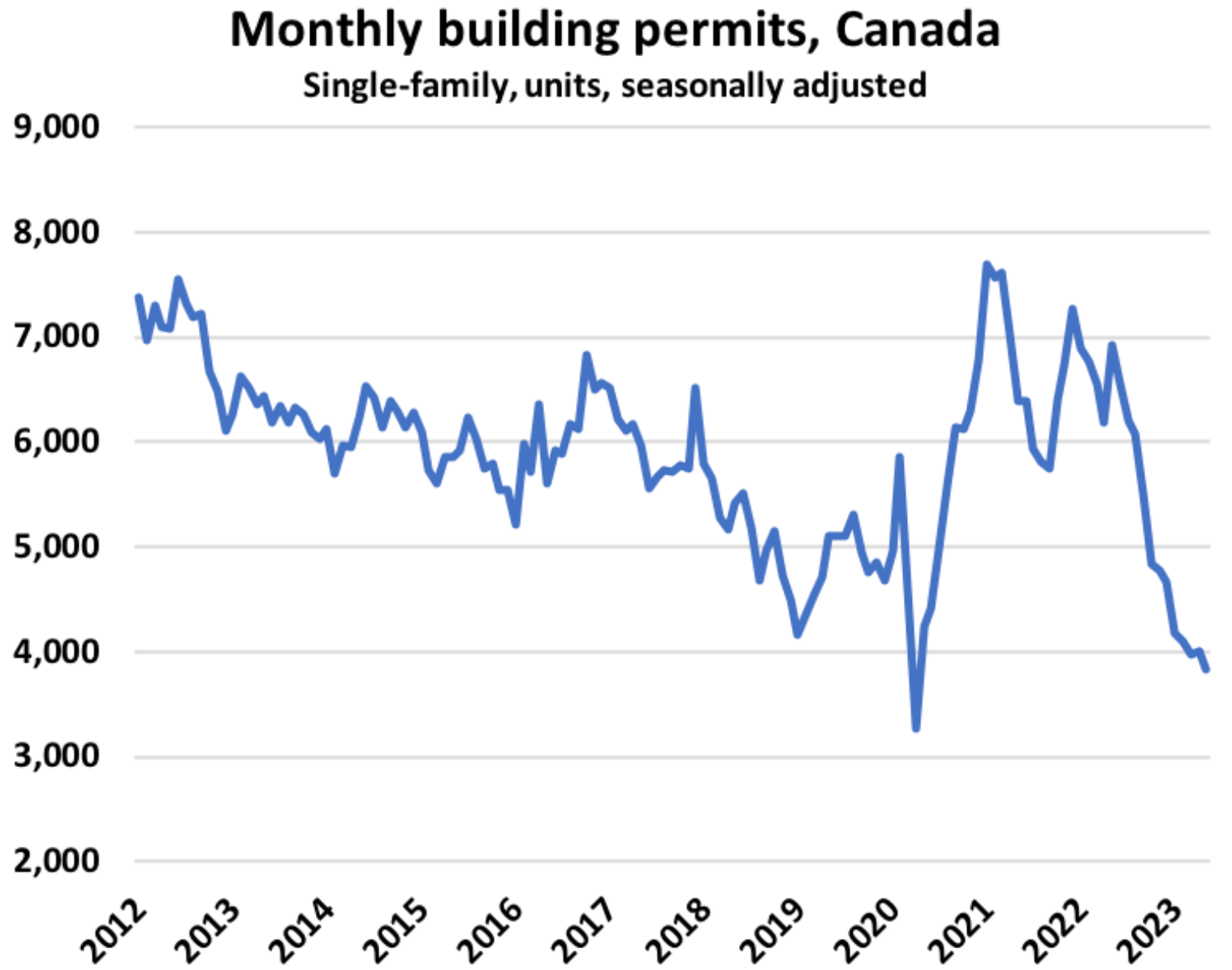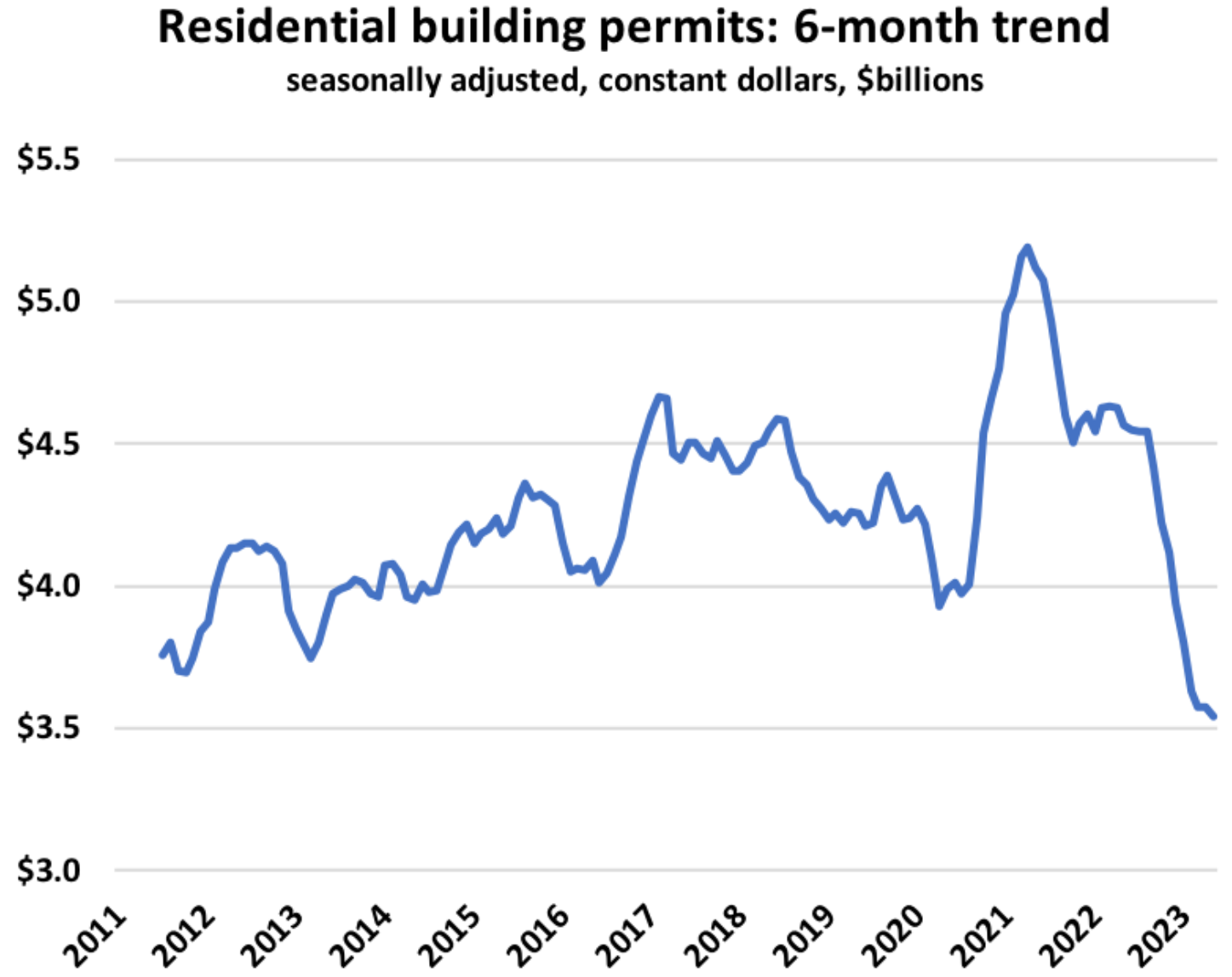I noted last week how Canada is experiencing the strongest population growth on record, driven almost entirely by unprecedented net overseas migration (NOM).
Canada’s population ballooned by just over 1.2 million people in the year to March, with nearly all (98%) of that growth coming from net overseas migration:

The next chart comparing Canada’s population growth rate against the United States’ encapsulates the enormity of Canada’s population growth (read immigration):

Source: Ben Rabidoux
Canada’s housing market is already in crisis. Rents are soaring and homelessness has risen substantially across the nation.
The situation is guaranteed to get much worse, with actual housing construction rates across Canada collapsing.
The next chart shows that the number of monthly single-family housing permits has collapsed to depths commensurate with the temporary low experienced over the pandemic:

Source: Ben Rabidoux
The real value of residential building permits has also collapsed to levels not seen for more than a decade:

Source: Ben Rabidoux
Falling dwelling construction during a period of unprecedented population growth can only mean one thing: deepening housing shortages, rising rents and more homelessness.
A similar situation is unfolding in Australia, which is also experiencing record actual and projected population growth at the same time as actual dwelling construction rates are falling:

Why do centre-left administrations like the Trudeau and Albanese governments hate the working class so much that they treat them like battery hens?

